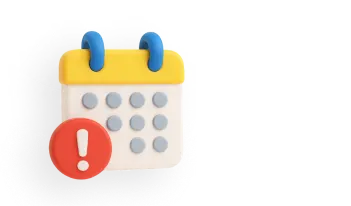What Is PDS?
The Public Distribution System (PDS) is a Government of India initiative aimed at food security that supplies essential items such as wheat, rice, and kerosene at subsidised prices to economically weaker sections. It works through a network of Fair Price Shops (FPS), also referred to as ration shops, to make food accessible to poor families. The major goals of PDS are to eradicate hunger, stabilise the price of food, and provide support to vulnerable groups.
Types Of PDS In India
- Universal PDS (Prior to 1997): At the beginning, PDS was universal to all citizens without economic categorisation, but it caused inefficiencies and misallocation of resources.
- Targeted Public Distribution System (TPDS) (1997-2012): TPDS was implemented by the government to classify beneficiaries under Below Poverty Line (BPL) and Above Poverty Line (APL) households for proper targeting.
- National Food Security Act (NFSA) (2013-Present): NFSA provides 5 kg of food grains per individual per month at subsidised prices to priority households as classified under the TPDS, while Antyodaya Anna Yojana (AAY) households are provided with 35 kg per household per month to assist the poorest of the poor.
Implementation Of PDS In India
- Procurement of Food Grains: The Food Corporation of India (FCI) buys food grains from farmers at Minimum Support Prices (MSP) fixed by the government.
- Storage & Transportation: The food grains so procured are stored in government godowns and warehouses before they are transported to various states.
- Allocation to States: The central government distributes food grains to state governments according to requirements and population.
- Distribution through Fair Price Shops (FPS): State governments deliver the allocated food grains through a chain of Fair Price Shops (FPS), popularly referred to as ration shops.
- Ration Cards for Beneficiaries: Subsidised food grains are accessed by eligible households through ration cards classified under Antyodaya Anna Yojana (AAY), Priority Household (PHH), and Above Poverty Line (APL).
- Pricing System (Central Issue Price - CIP): Beneficiaries are provided with food grains at subsidised prices: Rice - Rs. 3/kg, Wheat - Rs. 2/kg, Coarse grains - Rs. 1/kg under the National Food Security Act (NFSA), 2013.
- Digital Reforms for Transparency: Aadhaar-based authentication, end-to-end computerisation, and biometric verification have been brought in by the government to curtail corruption and provide proper distribution.
- One Nation One Ration Card (ONORC): This change makes it possible for beneficiaries, in particular migrant labourers, to avail their rations from any FPS anywhere in India, enhancing portability.
- Direct Benefit Transfer (DBT) of PDS: In certain states, rather than food grains, the government deposits cash subsidies directly in the bank accounts of beneficiaries to enable them to buy food from the open market.
- Monitoring & Grievance Redressal: The State Food Commissions (SFC) are tasked with monitoring the Public Distribution System (PDS). To assist beneficiaries in raising complaints, e-portals, mobile apps, and toll-free helplines are available.
Benefits Of PDS
- Ensures Food Security: It protects vulnerable people from hunger and malnutrition.
- Helps Farmers: Government food procurement from framers guarantees them with a proper income.
- Reduces Economic Inequality: It gives a good amount of food to the poor.
Key Takeaways
Public Distribution System (PDS) is a government program that is responsible for the security of food for crores of Indians by supplying grain at subsidised rates. In spite of issues like leakages and corruption, innovative steps like Aadhaar seeding, ONORC, and DBT are making it more effective. With the continuous advancements in technology, PDS can be a significant contributor to making India's fight against poverty and hunger deeper.






